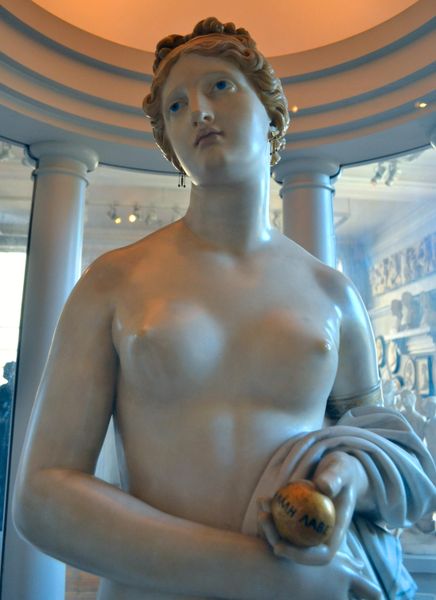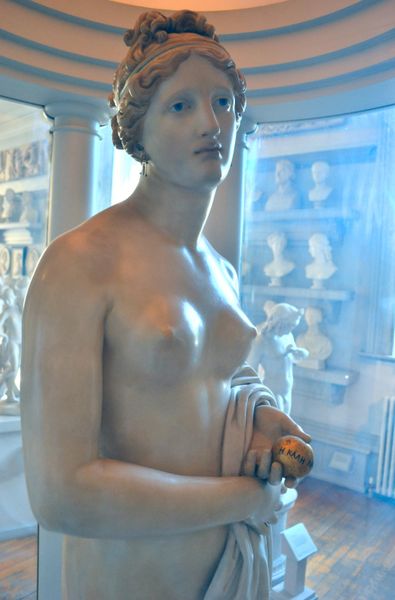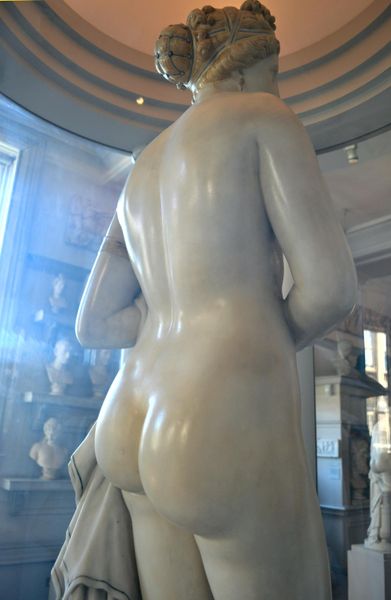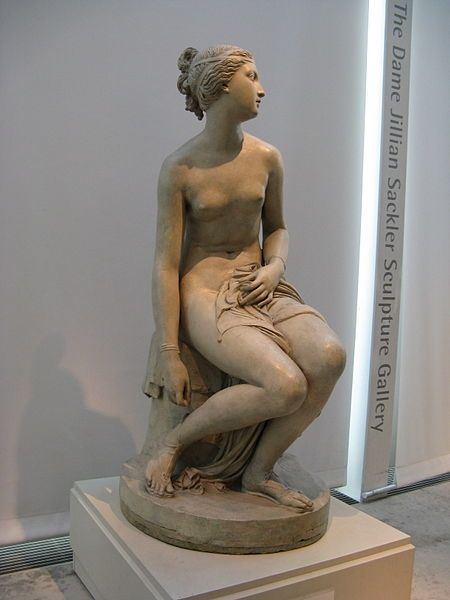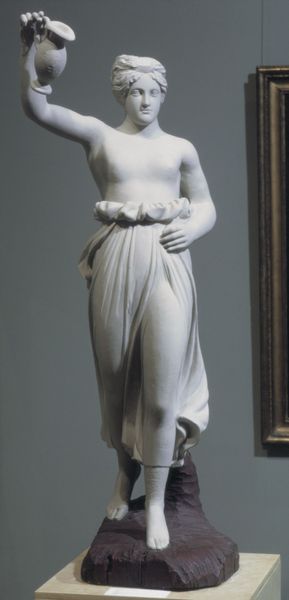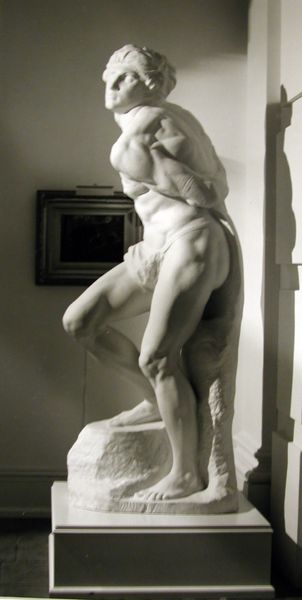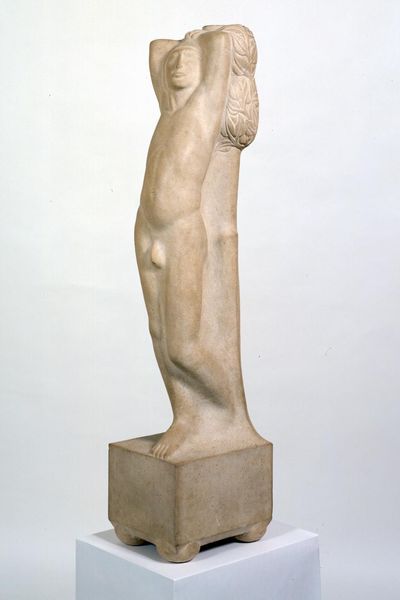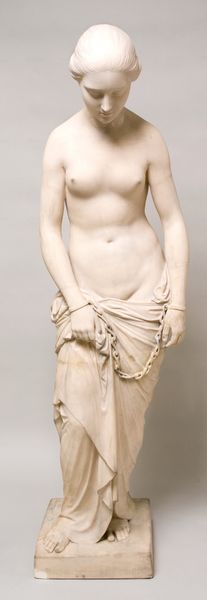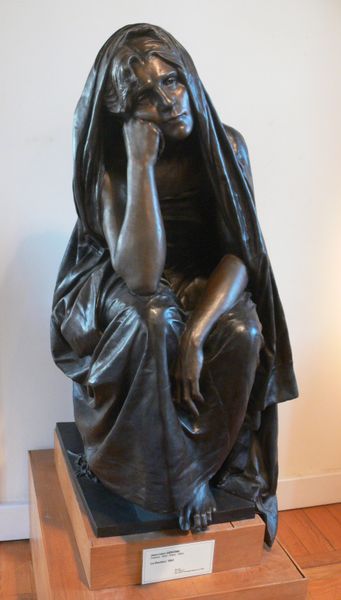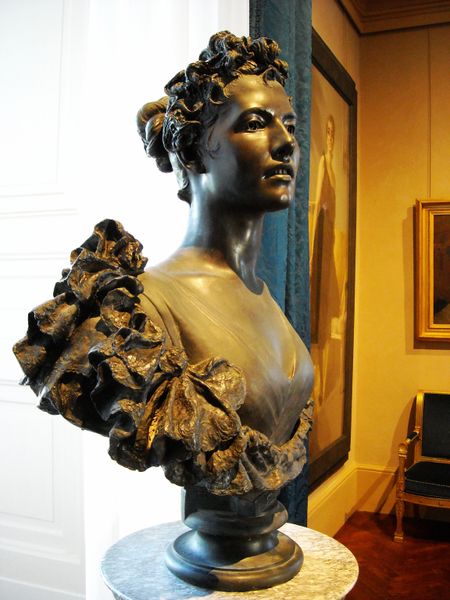
Copyright: Public domain
Editor: Here we have "The Tinted Venus," a marble sculpture created by John Gibson in 1862. Seeing her in this shot, in what seems to be a museum setting, makes me think about its intended audience and purpose. What story was Gibson trying to tell, and for whom? Curator: That’s a crucial question to ask. Gibson’s “Tinted Venus” was incredibly controversial in its time precisely because of those questions. The Victorian era was characterized by its prudishness and strict moral codes. Classicizing the nude was permissible as long as it alluded to the ancient world in some form, not modernizing its form or spirit. But Gibson dared to apply color to his marble sculpture, specifically a flesh tint, bringing the classical ideal almost scandalously into the present. Editor: Scandalously modern... So it wasn’t just the nudity itself, but how Gibson presented it? Curator: Exactly. By adding color, he disrupted the accepted conventions. It raised questions about the role of art and sculpture, in particular: should they merely imitate the ancients or interpret and modernize their legacy? And perhaps more subversively: should they cater to the existing artistic power structures or upset their assumptions with new forms? He faced a storm of criticism and, interestingly, that controversy ultimately bolstered the statue’s fame, cementing Gibson's place as an artist who dared to challenge Victorian society through his work. Editor: That is unexpected and exciting. I never thought the light blush of colour would ignite debates about society and expectations. Curator: It highlights how the social and cultural context profoundly shapes our understanding and judgment of art. An art piece may or may not cause changes in those factors. Sometimes, merely expressing defiance is enough to alter perspectives.
Comments
No comments
Be the first to comment and join the conversation on the ultimate creative platform.
